Introducing one of the world’s smallest, hardiest, most docile pet pythons. Check out our Savu Python care sheet to find out more…
Last updated on February 1st, 2023 at 09:25 am
Savu Pythons are really cool little snakes. They make great pets, having the laid-back temperament hobbyists know and love from larger python species. In this article, we’ll look at their captive husbandry, focusing on their size, water, temperature, diet, and enclosure requirements so that you know how to care for them.
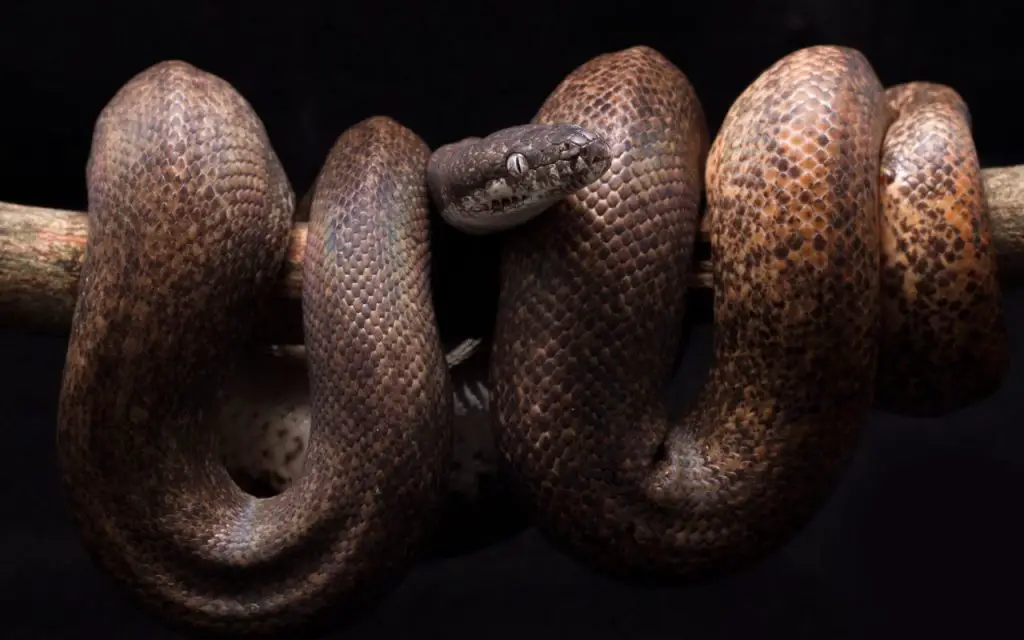
Natural history
The Savu python (Liasis mackloti savuensis) is found only on Sawu island (previously spelt as Savu). Interestingly, the island is just 10 miles long and 6 miles wide.
The python has been found in grasslands, thickets of palms, thorn scrubs, and the shore of the ocean. It is said that this python is aslo found in the nearby island of Raijua. It may be present on others, but this is still unclear.
First described in 1956, it was initially categorized as a subspecies of the Macklot’s, or Freckled, Python (Liasis mackloti). With the temperament and hardiness of a Burmese python, but in a tiny package, this snake become popular as a pet in the 1990s.
When young, the python is terracotta or orange brown in color with no patterns on its skin. After it becomes an adult, the color changes to a mix of brownish-black freckles.
Some speckles that are brownish-orange can also be observed. It has striking white eyes too, which is why it is often called White Eyed Python.
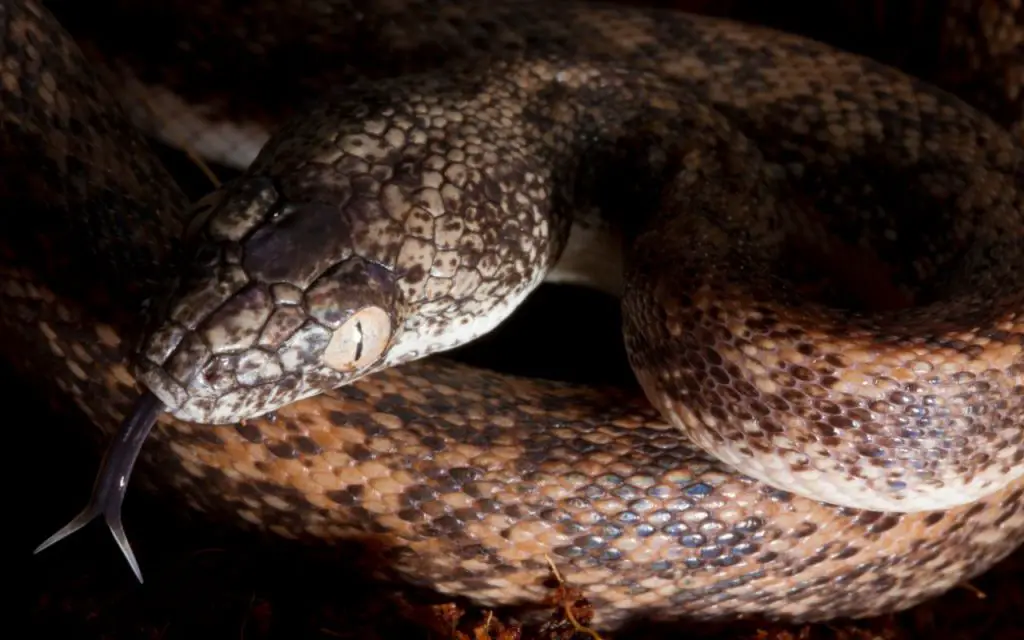
Scientific Classification
For a long time, many herpetologists have considered the Savu Python to be either a separate subspecies (Rawlings and Barker, 2004) or a full species (Barket et al., 2015), rather than just a unique population of the Macklot’s Python (Liasis mackloti).
On this point everyone agrees; they just don’t all agree whether Savu’s should be a full species or not. Personally, I don’t know if they should be a full species, but they are certainly on a separate evolutionary path, so they will be eventually.
At this point, most people consider them to a subspecies of the Macklot’s Python with the nomenclature of Lisasis mackloti savuensis, and so this is the classification I’ve included here.
Nonetheless, you will see Savu Pythons labelled either Liasis mackloti savuensis or Liasis savuensis in the literature.
| Class: | Reptilia |
| Order: | Squamata |
| Suborder: | Serpentes |
| Family: | Pythonidae |
| Genus: | Liasis |
| Species: | Liasis mackloti |
| Subspecies: | Liasis mackloti savuensis |
Savu Python Size
There are around 53 different python taxa. Of all these, the Savu python is around about the fourth smallest python. The adult Savu python can grow up to 5 feet in length. This is the size of the female, the male would be slightly lesser in size.
On average, males are between 3 to 4 feet long. Female Savu pythons are 4 to 5 feet long. Notwithstanding, you regularly come accross males that are only 30 inches long and slim when fully grown – like a Ball Python but half the weight.
You can expect healthy, captive bred males to eventually weigh 600-900grams, and females to weigh 1200-1600grams.

Savu Python humidity
The Savu python requires a moderate humidity level of 55-60%. It is important that the right humidity level is maintained, so the python sheds properly.
This is lower than some other equatorial species because the island of Sawu is exposed to winds from Australia that dry it out for most of the year, then a monsoon from December to March. They can tolerate high humidity – but in the long run it will cause problems like respiratory infections or scale rot.
You can buy a hygrometer to monitor the humidity level in the tank. You can mist the tank to increase humidity when needed. Placing a water dish near the hot side of the tank can also help in raising humidity levels. Proper ventilation is needed for the tank at all times.
Water
You need to provide sufficient water for your pet Savu python. Keep a clean water bowl filled with fresh water in the python’s enclosure.
The bowl should be heavy, so the python does not topple it over while drinking. When your pet python feels like it, it will soak in the bowl. Though they don’t like very high humidity, they do seem to enjoy soaking from time to time.
So, get a large bowl that can accommodate your pet Savu python. Change the water twice a week or whenever the water becomes dirty. Clean the water bowl using soapy water or veterinary disinfectant to disinfect it.
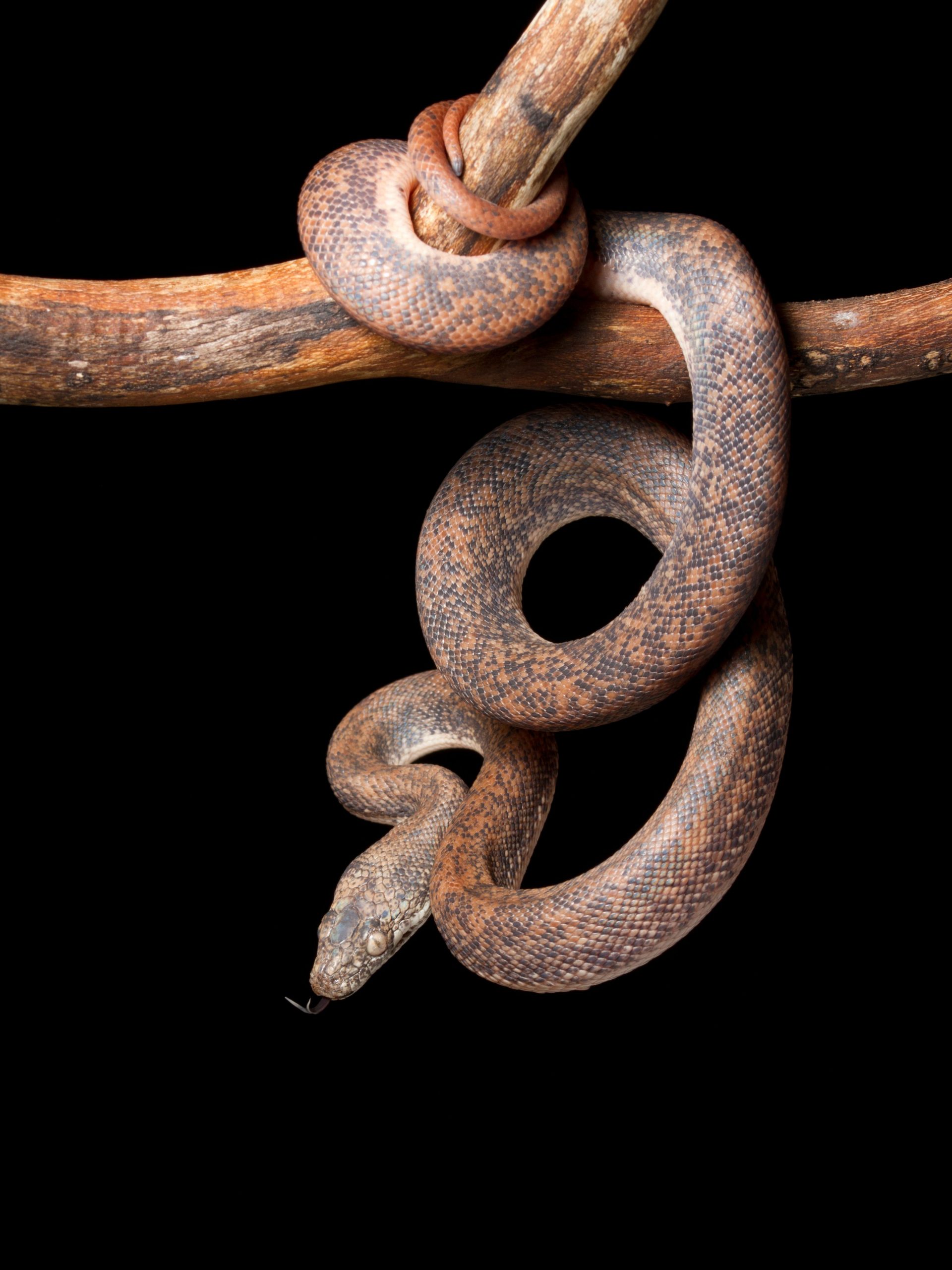
Temperature
Though it’s from the same region as the White Lipped Python, I recommend very slightly higher basking spot temperatures for Savu Pythons.
The reason is that Savu Island has a different meteorology to larger islands. It has less forests and is quite open , allowing more sunlight to reach ground level where Savu Pythons live.
The sun in the area is baking hot during the day, and this heat filters into the refugia of snakes. It is also retained for some of the night in the upper layers of soil and debris.
Ideally, you need to have two sides of the tank to create a temperature gradient: the hot side and the cool side. The hot side should have a temperature of 90 to 92F (32-33C) and the cool side can have a temperature of 80 to 85F (26-29C). At night, these temperatures can fall to 80-85F (26-29C) and 75F (24C) respectively.
You can use a thermometer to keep track of the temperature. Use a heat pad under a tub or glass to raise the temperature. If you opt for a pvc or melamine vivarium, use a heat lamp or a cermaic heat emitter if you prefer, just remember that they must be used with a protective guard to prevent burns.
Both heat mats and heat emitters should be used in conjunction with a pulse-proportional thermostat. Basking lights should only be used with a dimming thermostat.
Ensure you get a good quality thermostat, so it works well all the time. Remember that if the thermostat fails, it can have an impact on the snake’s health. Microclimate and Habistat are both widely used, reliable brands.

Diet
In the wild, Savu Pythons probably have a varied diet, including common local prey items such as:
- rats
- mice
- lizards, including skinks
- nestling birds
The basic diet of a Savu python in captivity is much simpler:
- hopper mice for juveniles
- large mice or weaner rats for adult males
- small rats for adult females
These items should be frozen-thawed, as live feeding risks injury to the snake, and is frankly a little cruel (in my opinion).
While feeding the python, care must be taken that the mouse or rat is only about as wide as the largest part of the python’s body. This is a slender species that doesn’t do well with chunky prey like some other pythons.
You can feed the Savu python once a week when young, then every 10-14 days once it becomes an adult.
If you are feeding pre-killed rodents, you may get frozen mice or rats. Ensure they are taken out of the freezer and thawed entirely before being fed.
Thaw food by placing it in a bowl of hot water until it reaches a body heat kind of temperature. When the python is a baby, you should feed it young mice (hoppers). The meal size should increase as the python grows.
Enclosure type and size
There are several options to house the Savu python. You can house them in plastic tubs, rack systems, glass tanks or melamine or pvc vivariums/terrariums.
Personally, I think any of them can work, so long as you focus on providing adequate ventilation. If you want to use a plastic tub, go for it – but make sure you add enough air holes or vents to keep humidity down and ventilation good.
If you are using a tub or rack system, choose a tub measuring 6 quarts for hatchlings. If using an aquarium, use a 5 gallon tank. Once the hatchling grows into an adult, move it to a 32 to 40 quarts tub or a 20 to 30 gallons tank.
For pvc/melamine vivariums, you’ll eventually need a 36 inch one for most adult females, but a 24 inch one might work for males. I recommend an enclosure that is 80% of the snake’s total length.
To figure this out, check out the calculator below. Just add your snake’s length at the top, and you’ll get the ideal enclosure lenghth:
To ensure the python’s health you need to keep the enclosure clean. A thorough cleaning of the tank and the hides is needed once every couple of months.
Ensure you clean with soap and water, so you disinfect all that you have placed in the enclosure. Last but not least, think about where you should put your snake in enclosure: It should be away from windows and high-traffic areas of the house to help your pet feel safe.

Substrate
If you are using a rack system, you still need to provide a hide. It is important that the tank has hides, so the snake can take shelter in them and feel safe.
Ensure the hide is large enough to house the python. You can also consider placing logs or branches in the tank to provide space for the snake to hide.
The substrate for the tank can be aspen, coco chips, newspaper or cypress mulch. Whatever substrate you choose, just remember not to get it too damp because this will raise humidity to unacceptable levels.
As always, you must avoid using cedar as the substrate, since it can be toxic to snakes.
Handling
The Savu python is docile by nature and easy to care for. It will allow you to handle it without displaying aggression or irritation. The python’s temperament makes it suitable even for people keeping a snake as a pet for the first time.
Like all snakes, the python would like to be left alone most of the time though. It prefers to hide in its enclosure when it feels nervous. Avoid over handling the python. When you plan to handle, do it gently.
Do not grip the snake tightly. Allow it to climb and move over your hands or fingers and explore. Take care to ensure it does not fall from a height and hurt itself.
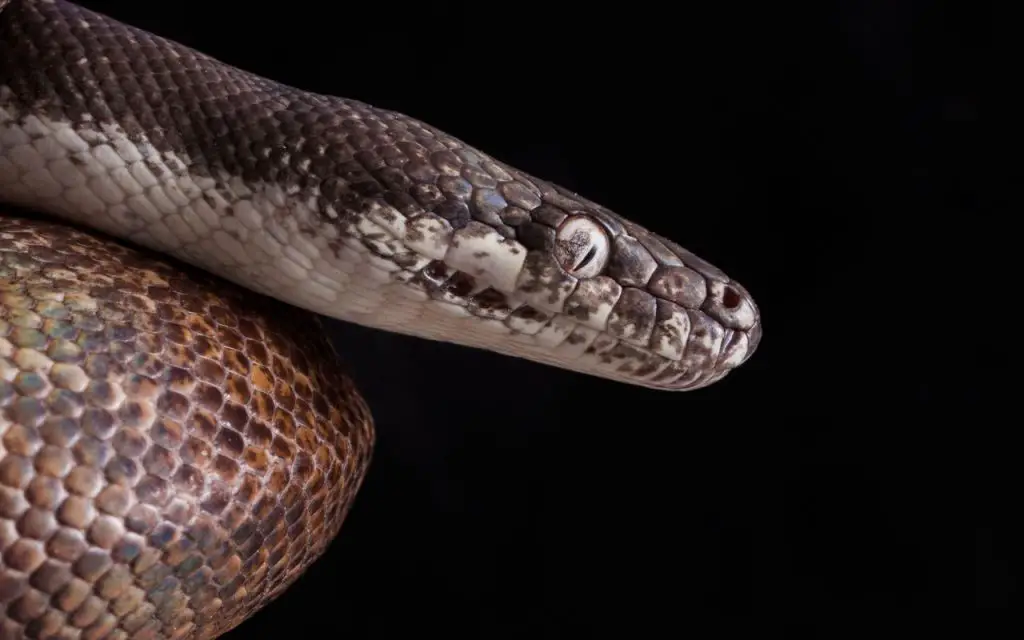
Savu Python lighting
As a nocturnal species, Savu Pythons don’t need UV lighting to synthesive vitamin D and use calcium. They’ve adapted to get everything from their prey.
So you don’t need to provide UV so long as you are providing quality rodents as food, from a reputabel supplier.
That said, like all living things they need ambient light to help regulate their circadian rythm and keep them active. This can be light from a window, or a light in the room that is on for 12hours a day.
Alternatively, adding an LED lighting strip or a UV bulb to the enclosure will certainly make it look a lot nicer, especially if you’ve gone to the effort of building a natural-looking setup. Just because I say you don’t need to use UV, it doesn’t mean you can’t – I’m just giving you the facts.
Savu Python for sale and price
Savu pythons are occasionally bred in captivity and are popular pets when available. If you want to keep one as a pet, you can buy it from an online marketplace like Morphmarket, for example.
The problem is, there’s never many of them available, and they command high prices. In my experience, it’s hard to find them captive-bred for less than $800. Are they worth it? Yes. But it’s a high price nonetheless.
I also want to add here that imports aren’t that common anymore either. Collecting wild caught animals destroyed their wild population in the 90’s to the point where their sale was restricted. They still aren’t imported to North America or Europe on a regular basis to this day.
Breeding Savu Pythons
If you are breeding Savu pythons, then the information that follows will be helpful.
The Savu python would breed once it is more than 3 years old. It needs to be provided a cool-down period with lower temperatures.
You can start in October and continue until December by lowering day time temperatures to 80-82 F and night time temperatures of 72-74 F.
After December, you can once again resume with normal temperatures. After 2 weeks of maintaining normal temperatures, the male can be introduced into the female’s enclosure.
Increased feeding during this time will help the female ovulate properly. After the pythons mate, the female would lay eggs after a few months.
You need to provide a proper nest box and ensure the temperature is properly maintained. They usually lay 5 to 10 eggs. The eggs can be incubated in damp vermiculite at a temperature of 86F (30C) and a humidity of 90%+. After 50 to 60 days of incubation, the eggs will hatch.
For a more detailed explanation of their breeding process, you can read this pdf on Savu Python Breeding by Adam Radovanovic.
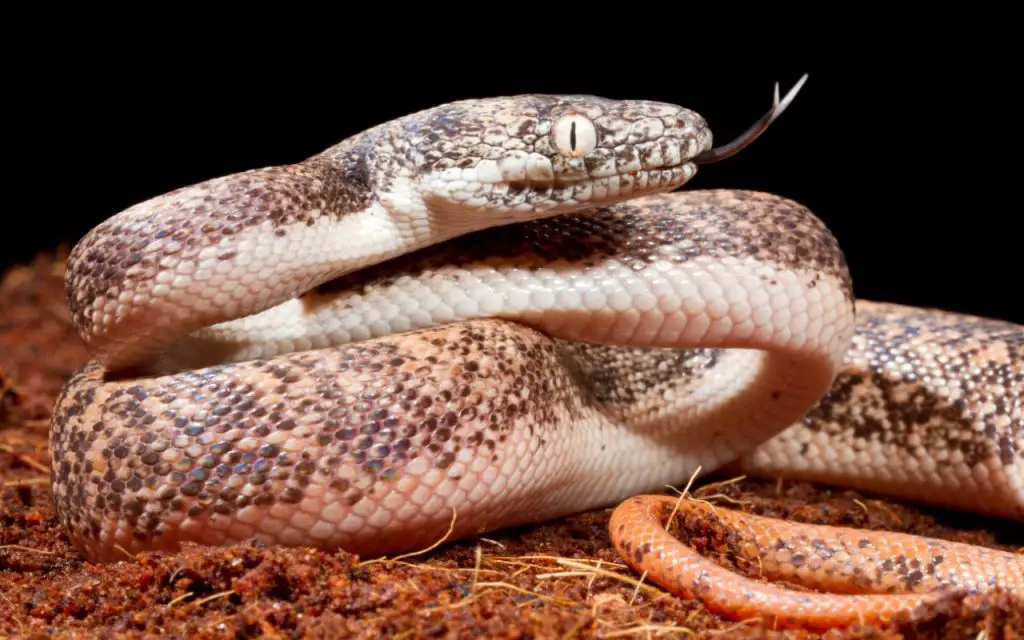
Savu Python Care Summary
| Temperature: | Warm end 90-92F (32-33C), cool end 80-85F (26-29C). Drop to 80-85F (26-29C) and 75F (24C) at night |
| Humidity: | 50-60% |
| Favourite food: | hopper mice for juveniles, large weaner or small rats for adults |
| Enclosure size: | Minimum 40cm x 30cm x 18cm for juveniles, 90cm x 40cm x 40cm for adults |
| Activity rythm: | Nocturnal |
| Lighting needs: | UV light not necessary, but ambient lighting beneficial for naturalistic enclosures |
| Lifespan: | Probably in excess of 20 years |
Quick summary video
FAQs relating to Savu Python care
Are Savu pythons good pets?
Yes, Savu Pythons make good pets. They are small in size and taking care of them is not a hassle. This is why the species is so popular. This python has a good temperament that makes it easy to handle. It is also easy to feed and only requires a small enclosure. There is only one problem with them: availability. They are hard to find, and expensive when you do.
How big can a python get?
Pythons get truly huge. Captive Burmese Pythons in particular regularly exceed 10 feet (3m) in length, and can weigh over 100lbs (45kg). These are conservative estimates, too! Cleaning the enclosures of snakes that size is a truly gross affair when they’ve made a large mess.
This is why the Savu Python is an attractive species. It’s just as docile as a Burmese, but much smaller. A Savu python reach a slender 5 feet (1.5m) long at the most. Some males never exceed 30 inches (76cm), and can live in 24 inch (60cm) long enclosure.

